Twenty years ago I had one password that was pretty secure even back then. Today I have over 100 accounts that require a password and can only remember them because of Excel.
Using secure passwords is prudent because your passwords can be hacked. Yet secure passwords are difficult to remember, hence the need to store them somewhere. There are a lot of password managers out there, but I haven’t settled on one just yet.
Put Your Passwords in Excel
Some time ago I put my passwords into an Excel file that’s password protected. And while it’s possible that Excel can be hacked, I’m the only one with access to the file.
Keeping a password protected file to protect your passwords is easy. Here’s my approach: set up a spreadsheet with ID, Category, Account, Username, Password, and Comments as the column titles. Next input all the data you can find, remember or look up. Then save the file with a password. It should be unique, secure, and one you won’t forget.
Create a Password Protected file in Excel 2010, 2007, 2003
Select File, Save, Tools, General Options
- in 2007 click the Office button instead of File
- in 2003 the Tools button is located at the top of the File Save dialog box
In the General Options dialog box, type a password in the Password to Open text box, and click OK.
Verify the password by retyping in the Confirm Password dialog box. Make sure you read and heed the cautionary note, then click OK.
The next time you try to open the file a password is required. (You remember it don’t you?)
Now you can store all your secret passwords in this file and not worry about them.
Create a Password Protected File in Excel 2008
Excel 2008 for Mac has a little different starting point.
Select File, Save, and click Options.
In the Save Options dialog box enter your password in the Password to Open text box.
Confirm the password, read and heed the cautionary note, then click OK.
When opening the file a Password dialog box pops up. Enter your password to open the file.
Keep an Excel File in Dropbox for Passwords
Now I have an iPhone and iPad, and find that sometimes I need a password when I’m not anywhere near my computer. My solution was to move my Excel file into My Dropbox folder on my computer, which automatically syncs with my Dropbox account, to which my mobile devices have access. (My, my, my)
Now when I’m on my mobile device and need to recall a password, I use Documents to Go Premium to open the password protected Excel file and locate that bad boy. And Dropbox keeps files encrypted per their security features so I feel comfortable with this arrangement, for now.
UPDATE: Using a Password Manager is Prudent
In February of 2011 my Excel spreadsheet had grown to 120 accounts and I finally decided to take a big step by signing up for a LastPass account. LastPass is an online password manager and form filler that makes web browsing easier and more secure. ![]() Because of my blogging, I make use of several browsers — Firefox, Chrome, Safari — and LastPass has plugins for each that work seamlessly. LastPass also works equally well on my Dell desktop and MacBook Pro computers. (I pay the $12 a year for LastPass Premium, which is well worth the price.)
Because of my blogging, I make use of several browsers — Firefox, Chrome, Safari — and LastPass has plugins for each that work seamlessly. LastPass also works equally well on my Dell desktop and MacBook Pro computers. (I pay the $12 a year for LastPass Premium, which is well worth the price.)
Excel is okay for a small amount of passwords, but ultimately a password manager is better.

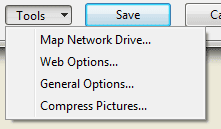

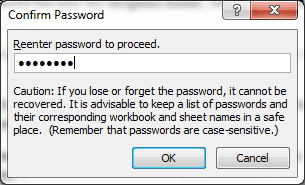

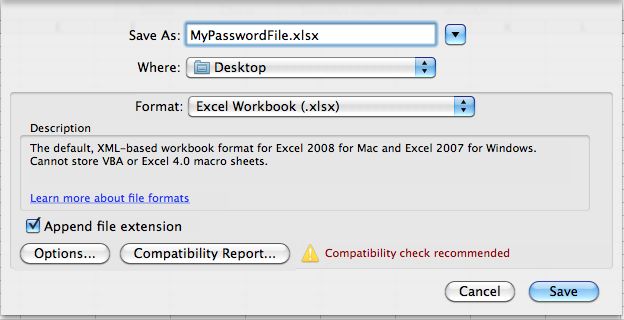

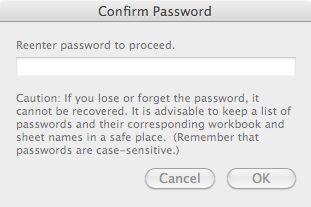
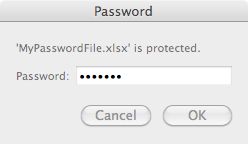
I also use a password protected Excel spreadsheet and – because the Dropbox iPad cannot open such files – also open the file in Documents to Go Premium. The problem is, if I need to amend the file, Documents to Go opens the file in read only mode and thus changes made cannot be saved back, unless in a re-named file. So, great to simply read your password file, but not for making a change to it.
You have echoed my exact thoughts.
don’t do this.
See this site: https://www.passwordstudiopro.com/
Use keepass or lastpass for saving passwords
About 6 months after I wrote this article I decided to go with LastPass. Excel is fine for managing a few passwords, but a password manager is a much better idea. And as a practical matter a good password manager is safer and works seamlessly with different kinds of Internet browsers and mobile devices.
I should probably update the article so people know that password manager is a better idea. Thanks for the comment.